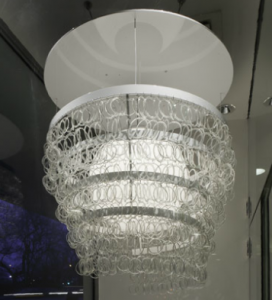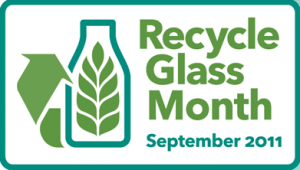Laurel Herter with BottlesUp on WHHI-TV’s “Girl Talk”
Watch Laurel Herter, creator of bottlesUp Glass Water Bottles in “Girl Talk”.
Laurel Herter with BottlesUp on WHHI-TV’s “Girl Talk” Read More »
Watch Laurel Herter, creator of bottlesUp Glass Water Bottles in “Girl Talk”.
Laurel Herter with BottlesUp on WHHI-TV’s “Girl Talk” Read More »
We’re always on the lookout for creative ways to reduce kill the use of plastic in innovative ways. We’ve found 3 examples we just have to share – an event, a city and a school:
At the Montréal Jazz Fesitival, the organization invited Fontaine Naya a water-bottle refilling service from Quebec-based Naya Waters designed to minimize plastic waste. For an affordable price (CAN$1.50) event patrons could simply refill their water bottles and stay hydrated while doing good for the planet. Public, outdoor events are huge consumers of plastic water bottles, this jazz festival has been carbon-neutral 2008 but this past summer they focused on water and reducing plastic consumption and trash. Their success, we hope, will inspire other event organizers to consider a water refilling stations to keep their crowds healthy and hydrated.
TapIt is a community program that enables people to refill their water bottles at participating cafés, completely free of charge in, and around, New York City (and now San Francisco and Washington, DC!). For the water-totting crowds in this city, the goal of this program is to help people stay healthy and hydrated without relying on single-use plastic bottles. And it’s so easy – restaurant or café with a soda dispenser or tap that gives clean drinking water can sign up as a partner. Thirsty consumers can find taps online or via TapIt’s iPhone app, and are provided with information on the type of water that’s available, telling discerning customers whether the water’s filtered or non-filtered, room temperature or chilled. How great is that?
In Wolfeboro, New Hampshire, the Kingswood Regional High School and Middle School a recently rebuilt middle and high school go beyond LEED certification, and for the coveted CHPS certification. Aside from new synthetic and natural turf athletic fields as well as a Geothermal Ground Heat Exchanger piping system to serve the entire campus, the new school takes advantage of natural light, LED lighting when needed, energy sensors and other energy-saving efforts. But what really stood out to us? They have been smart enough to include reusable water bottle refilling stations right by the traditional water fountains on campus. Through their efforts, they are teaching the next generation the importance, the beauty, and the need to be green in our personal and public environments.
We’re so impressed that people, communities, events and even whole cities are finding ways to encourage people to stop using single-use plastic
bottles and reuse environmentally-friendly water bottles. Now you’ve got access to water, and we’ve built the only reusable glass water bottle made from a minimum of 75% post-consumer recycled glass and ZERO plastic.
Share with us, what do you do to minimize your use of single-use plastics?
3 Creative Ways to Kill the Need for Single-Use Plastic Bottles Read More »

“The spiral lighting fixture, inspired by the architecture of the Guggenheim Museum, features a white globe light and glass rings. The chandelier made its national debut at the Guggenheim Museum in New York during the Architectural Digest Home Show and now moves to its current home at Switch Modern in Atlanta.”
Kathleen’s beautiful pieces are made from recycled glass from soda, wine, beer and even salad dressing bottles. It’s another clear example that glass – with its three simple and natural ingredients – can be endlessly and beautifully recycled. In addition to the Smart Glass Guggenheim Chandelier and Kathleen’s other works of art for the home, she is the founder and designer of Smart Glass Jewelry with this beautiful work showing up on fashion-forward runways and the small screen.
You can bring more of the beauty of recycled glass into your world, whether you make the smart, healthy choice for a reusable glass water bottle or make your next jewelry piece a declaration of sustainable luxury – you can discover the beauty, simplicity and endless
potential of glass.
Kathleen Plate, Sustainable Lighting Artist and Recycled Glass Artist Read More »

Well we’re getting involved in our own way.
So, won’t you join us in September for Recycle Glass Month?
September is Recycle Glass Month Read More »
This past week, The Wall Street Journal, reported on a PET (polyethylene terephthalate) plastic recycling plant in Spartanburg, S.C. built to meet the demands for recycling plastics. What started out as a promise to push PET products like beverage bottles from landfills (and our oceans) and back into reusable materials, has fallen miserably short. Centered on Coca-Cola’s promise to recycle 100% of its bottles and cans by 2020, the article focused on the challenges of getting plastic out of our trash and into recycling facilities like the one here in S.C. Unlike glass, which can be endlessly recycled and not lose its quality, plastic recycling requires type-based separation or it can be deemed defective and defect cannot be reused for product packaging. It’s not just the mixing of plastics that’s the issue – simply put – not enough of our plastics are making it out of the trash and into the recycling bin.
A few points that stood out:
You can read the whole WSJ article here, or watch the video with reporter Mike Esterel.
What’s clear is that while we wait for incentive-based programs like bottle-deposits,
or we wait for better access to convenient recycling, or while we wait for engineers to find ways to better recycle plastics, our landfills and oceans are filling up with the nearly 75% of plastic that ends up in the trash.
What can we do? Here are 3 things you can do to help put plastics where they belong:
Plastic Fails to Fill Recycling Promise Read More »